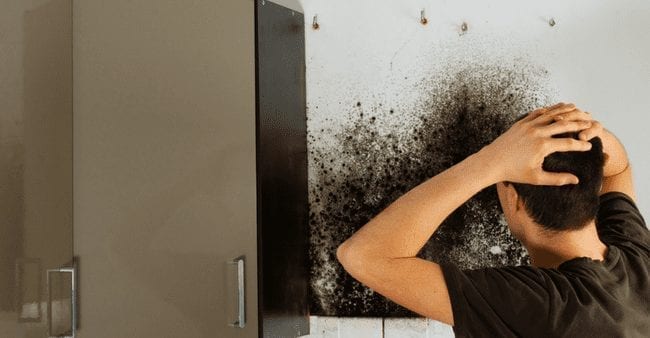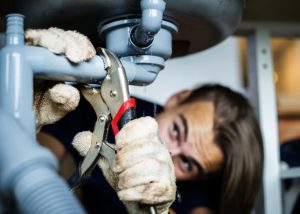How to Check If Your House Has a Surprise Leakage
How to Check If Your House Has a Surprise Leakage
Blog Article
Do you find yourself in search of facts and techniques around Top leak detection hacks?

Early discovery of leaking water lines can minimize a possible catastrophe. Besides saving you money, it will certainly minimize the stress and also frustration. The minute you find a leakage, calling your plumber for repair work is the most effective service. Some tiny water leakages might not be noticeable. Below are some hacks that aid if you can not spot it with your naked eyes.
1. Take A Look At the Water Meter
Every residence has a water meter. Examining it is a guaranteed way that assists you find leakages. For beginners, shut off all the water sources. Make certain no person will purge, use the tap, shower, run the washing machine or dishwasher. From there, go to the meter and also watch if it will transform. Given that nobody is using it, there must be no movements. If it relocates, that shows a fast-moving leak. If you find no changes, wait an hour or 2 and check back again. This means you might have a slow-moving leakage that could also be below ground.
2. Examine Water Consumption
If you find sudden adjustments, in spite of your usage being the same, it means that you have leaks in your plumbing system. An abrupt spike in your expense suggests a fast-moving leak.
A steady rise every month, even with the very same routines, reveals you have a sluggish leakage that's also gradually escalating. Call a plumber to completely check your residential or commercial property, specifically if you feel a cozy location on your floor with piping beneath.
3. Do a Food Coloring Examination
When it involves water consumption, 30% originates from commodes. Test to see if they are running effectively. Decrease specks of food color in the tank and also wait 10 minutes. There's a leakage in between the container and also bowl if the shade in some way infiltrates your dish during that time without flushing.
4. Asses Exterior Lines
Don't neglect to inspect your outdoor water lines also. Test spigots by affixing a yard pipe. Must water permeate out of the link, you have a loose rubber gasket. Replace this and also make sure all links are limited. If you've got an automatic sprinkler, it will certainly assist get it properly checked out as well as preserved every year. One tiny leak can squander lots of water and surge your water costs.
5. Evaluate the circumstance and also inspect
House owners should make it a practice to examine under the sink counters and even inside cabinets for any bad odor or mold and mildew growth. These two red flags indicate a leak so punctual focus is needed. Doing routine assessments, also bi-annually, can conserve you from a major issue.
Inspect for discolorations as well as weakening as a lot of appliances and also pipes have a life span. If you suspect dripping water lines in your plumbing system, don't wait for it to escalate.
Early detection of dripping water lines can minimize a prospective calamity. Some tiny water leaks might not be noticeable. Checking it is a surefire way that helps you discover leaks. One tiny leakage can lose lots of water and also spike your water expense.
If you presume dripping water lines in your plumbing system, don't wait for it to rise.
How to Know If Your Home Has a Hidden Leak
Water Meter Reveals Inexplicable Water Usage
If you’d like to test whether or not there’s a leak somewhere in your home, you can do this using your water meter. Here is how to conduct the test:
Don’t use any water in your home for at least 30 minutes; this also means not turning on faucets or water-using appliances.
Go outside, and check your water meter for activity.
If your water meter shows that there was activity, even though no one was using any water, this proves that there is a leak in your home.Visible Mold or Mildew Growth
Leaks behind walls create moist, dark environments that allow mold and mildew to grow and thrive. Eventually, you might see mold growth forming on the wall closest to a hidden leak.
If mold is growing in an area that receives a high amount of moisture, such as a bathroom, it may simply be an indication that better ventilation is needed. However, if you see mold growth on a wall or the ceiling in an area where you would not expect, you probably have a hidden leak.
Musty, Mildew Odor
Sometimes you might not be able to see the mold or mildew that is growing as a result of a leak. However, the smell can give the problem away just as easily. If you catch a whiff of something musty, there’s a good chance that old water is collecting somewhere in your home that you can’t see.
Stained/Warped Walls, Ceilings, or Floors
When your home soaks up water, a variety of red flags can become visible, including ceiling stains, bubbling drywall, warped walls, and sagging floors. While these issues can be caused by excess humidity, they can also be signs that a pipe or plumbing connection has started leaking behind your walls.
Inexplicably High Water Bill
After a while, you get a general sense for what your water bill should be. If you own a pool or sprinkler system, your bill will tend to be higher during summer. However, if you receive a water bill that seems especially high, and you can’t figure out what caused it, then you may have a hidden leak somewhere that’s increasing your bill.
https://www.plumbingjoint.com/blog/2019/july/how-to-know-if-your-home-has-a-hidden-leak/

We hope you enjoyed our post on Hacks to detect leaks. Thank you for finding the time to read through our short article. Sharing is caring. You won't know, you may just be helping someone out. I value reading our article about Detecting hidden plumbing leaks.
Report this page